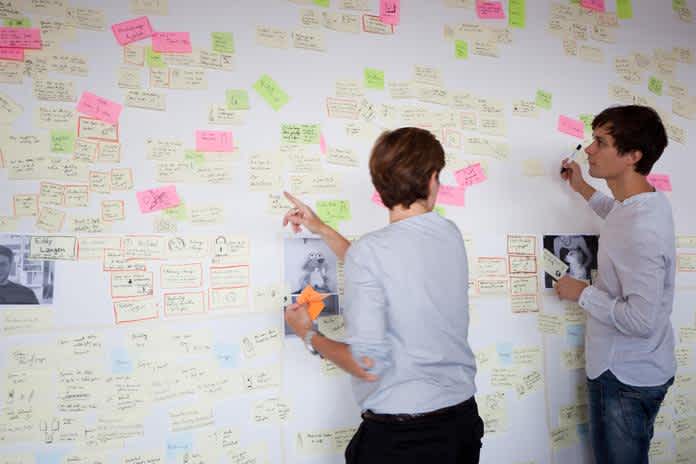Article
Is Service Design the new Marketing?

In traditional marketing – the way it has been taught at universities for the last 40 years – key purpose has been to create and sell products to standardized market segments. However, today the task is much more complex. Many new business models are based on collaboration and sharing. The traditional roles between the corporation (sender) and the user (recipient) are broken up – the new currency is value creation through use. Intelligent systems like Siri or numerous online services focus on understanding and reacting on individual patterns of interaction and communication.
Useful for all kinds of projects
As a multidisciplinary method, design research focuses on identifying and understanding human behavior. By finding patterns and key drivers for motivation, design research offers a contemporary and useful alternative to the standardized methods of traditional marketing. At Edenspiekermann we apply design research methods to most projects.
Even with a limited budget, applying the methods and thinking in our daily work helps us understand the motivations and reservations of the customers. And by the way: Design research is vital at all levels of a brand. The methods and thinking are not limited to so-called online projects. It is also a very valuable asset when understanding how brands can create value for the customers of our clients. When applying design research methods to brand development, we focus on understanding more about the “Why” (motivational drivers) because for us today, brands are about creating and nurturing sustainable relationships.
Relevant experiences
By applying service design to our concept development we acknowledge that the brand experience has extended to being related to many touchpoints along a so-called “user journey”. For us, service design is about creating a seamless brand experience throughout all channels.
During the exploration phase we gain in-depth knowledge about the customers (users), about their attitude, their feelings and logic or not-so-logic behavior relevant to the value proposition of our clients. These insights guide us throughout the following design phases. They help us navigate between the goals and strategies of our clients and the demands of their customers.
As a result, we sometimes end up taking the side of the customers – questioning the original strategy but ultimately creating a more valuable brand experience.
Read more about our service design project for Volkswagen. Service design thinking makes us use design elements like pictos as relevant contributors to the user’s experience – and thus, to the brand. Bearing the user’s experience in mind influences the way we work in all areas: Get to know a developer’s point of view at Edenspiekermann.
Save the date: Berlin-based Design Research Lab group invite you to their presentation on March the 22nd – and the door is open to everybody who is interested.
Photo: Ludwig Kannicht und Edenspiekermann